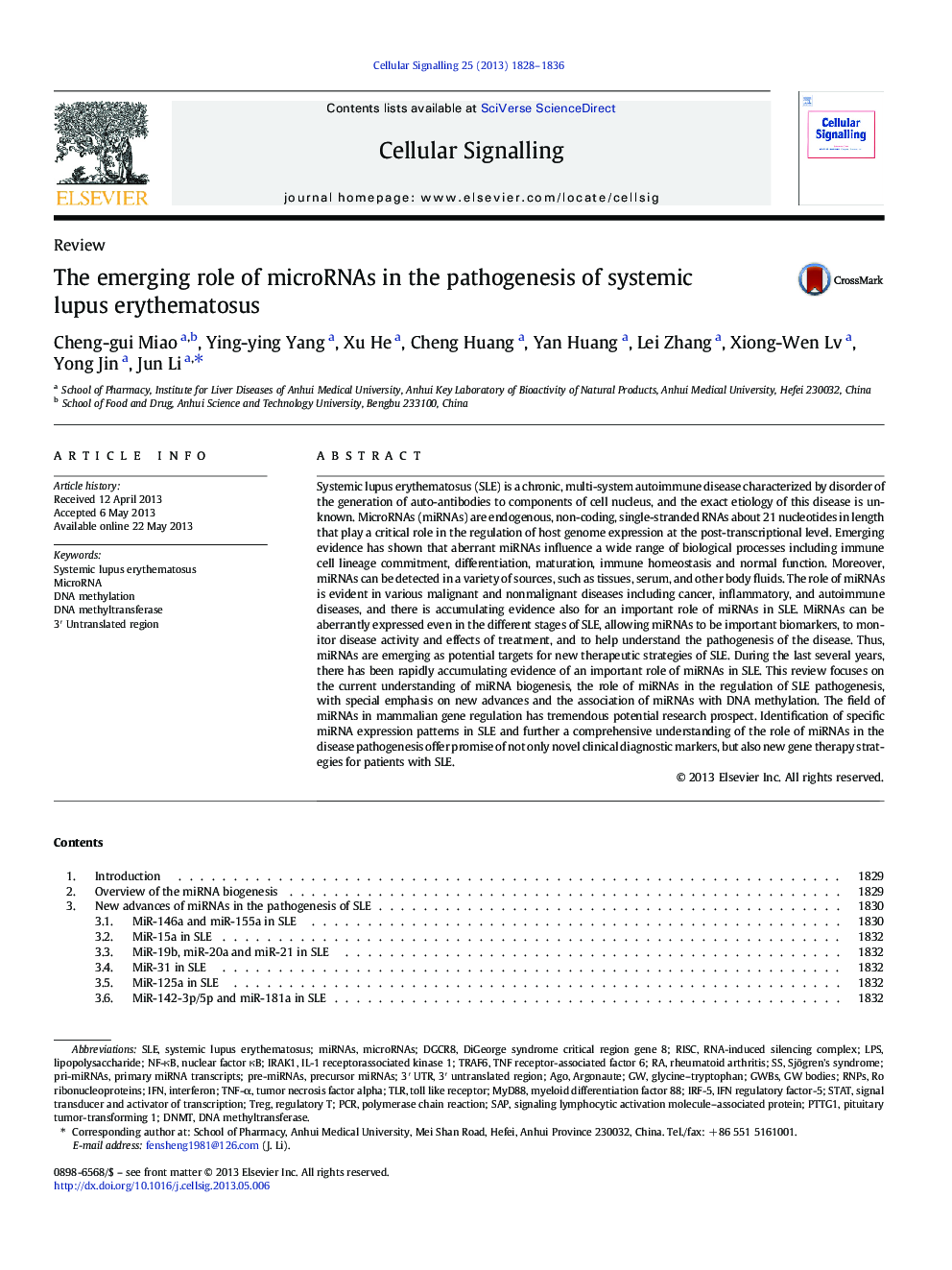| Article ID | Journal | Published Year | Pages | File Type |
|---|---|---|---|---|
| 10815421 | Cellular Signalling | 2013 | 9 Pages |
Abstract
Systemic lupus erythematosus (SLE) is a chronic, multi-system autoimmune disease characterized by disorder of the generation of auto-antibodies to components of cell nucleus, and the exact etiology of this disease is unknown. MicroRNAs (miRNAs) are endogenous, non-coding, single-stranded RNAs about 21 nucleotides in length that play a critical role in the regulation of host genome expression at the post-transcriptional level. Emerging evidence has shown that aberrant miRNAs influence a wide range of biological processes including immune cell lineage commitment, differentiation, maturation, immune homeostasis and normal function. Moreover, miRNAs can be detected in a variety of sources, such as tissues, serum, and other body fluids. The role of miRNAs is evident in various malignant and nonmalignant diseases including cancer, inflammatory, and autoimmune diseases, and there is accumulating evidence also for an important role of miRNAs in SLE. MiRNAs can be aberrantly expressed even in the different stages of SLE, allowing miRNAs to be important biomarkers, to monitor disease activity and effects of treatment, and to help understand the pathogenesis of the disease. Thus, miRNAs are emerging as potential targets for new therapeutic strategies of SLE. During the last several years, there has been rapidly accumulating evidence of an important role of miRNAs in SLE. This review focuses on the current understanding of miRNA biogenesis, the role of miRNAs in the regulation of SLE pathogenesis, with special emphasis on new advances and the association of miRNAs with DNA methylation. The field of miRNAs in mammalian gene regulation has tremendous potential research prospect. Identification of specific miRNA expression patterns in SLE and further a comprehensive understanding of the role of miRNAs in the disease pathogenesis offer promise of not only novel clinical diagnostic markers, but also new gene therapy strategies for patients with SLE.
Keywords
TLRDGCR8RNPsTregTRAF6IRAK1MYD88miRNAspri-miRNAsNF-κBprecursor miRNAsLPSDiGeorge syndrome critical region gene 83′ UTR3′ untranslated regionRheumatoid arthritisArgonauteSTATinterferonIFNtoll like receptortumor necrosis factor alphaRISCmicroRNAsSjögren's syndromeSAPmyeloid differentiation factor 88TNF receptor-associated factor 6TNF-αnuclear factor κBSystemic lupus erythematosusSLElipopolysaccharideSignal transducer and activator of transcriptionRNA-Induced Silencing ComplexRegulatory T polymerase chain reactionPCRAGOpre-miRNAs
Related Topics
Life Sciences
Biochemistry, Genetics and Molecular Biology
Biochemistry
Authors
Cheng-gui Miao, Ying-ying Yang, Xu He, Cheng Huang, Yan Huang, Lei Zhang, Xiong-Wen Lv, Yong Jin, Jun Li,
